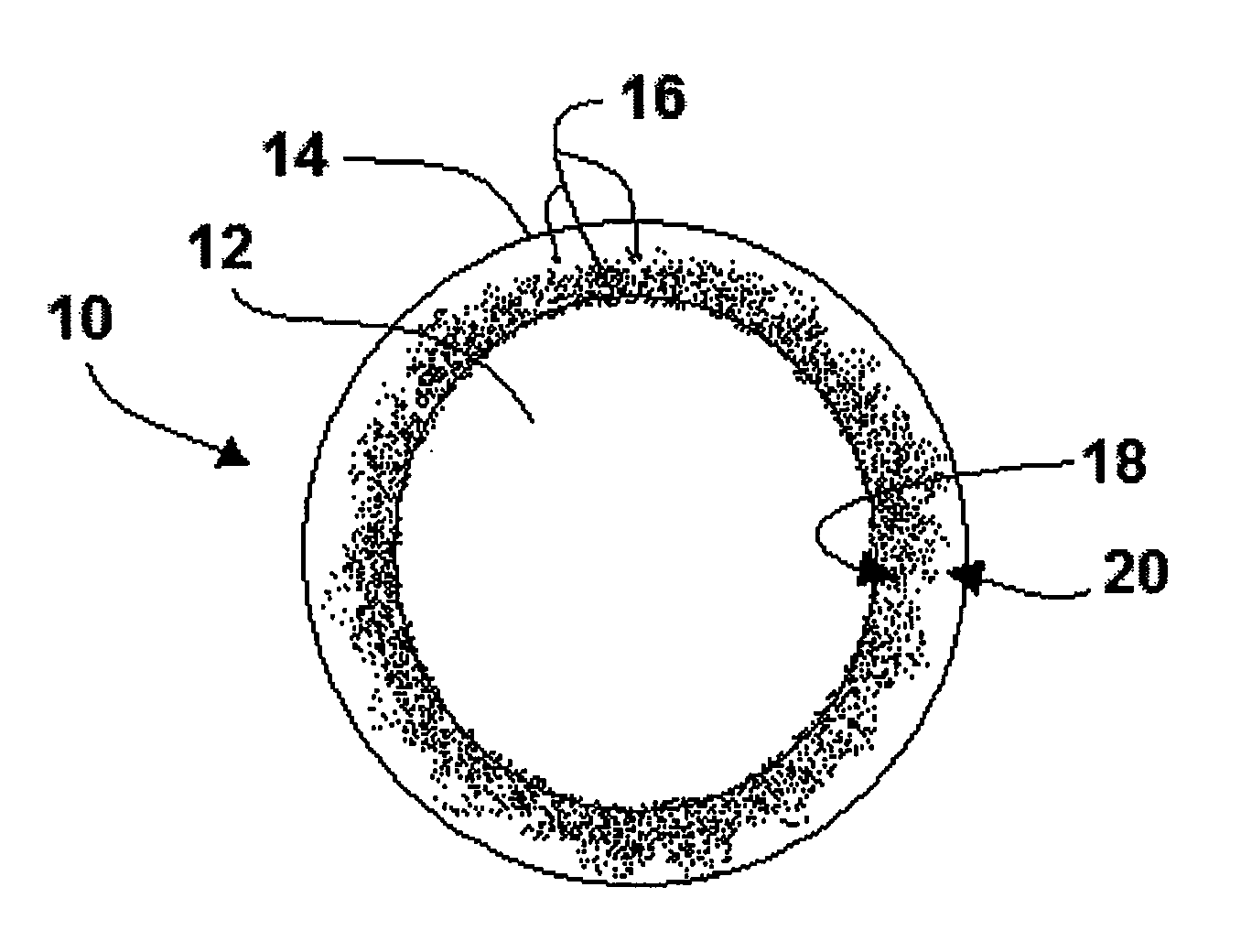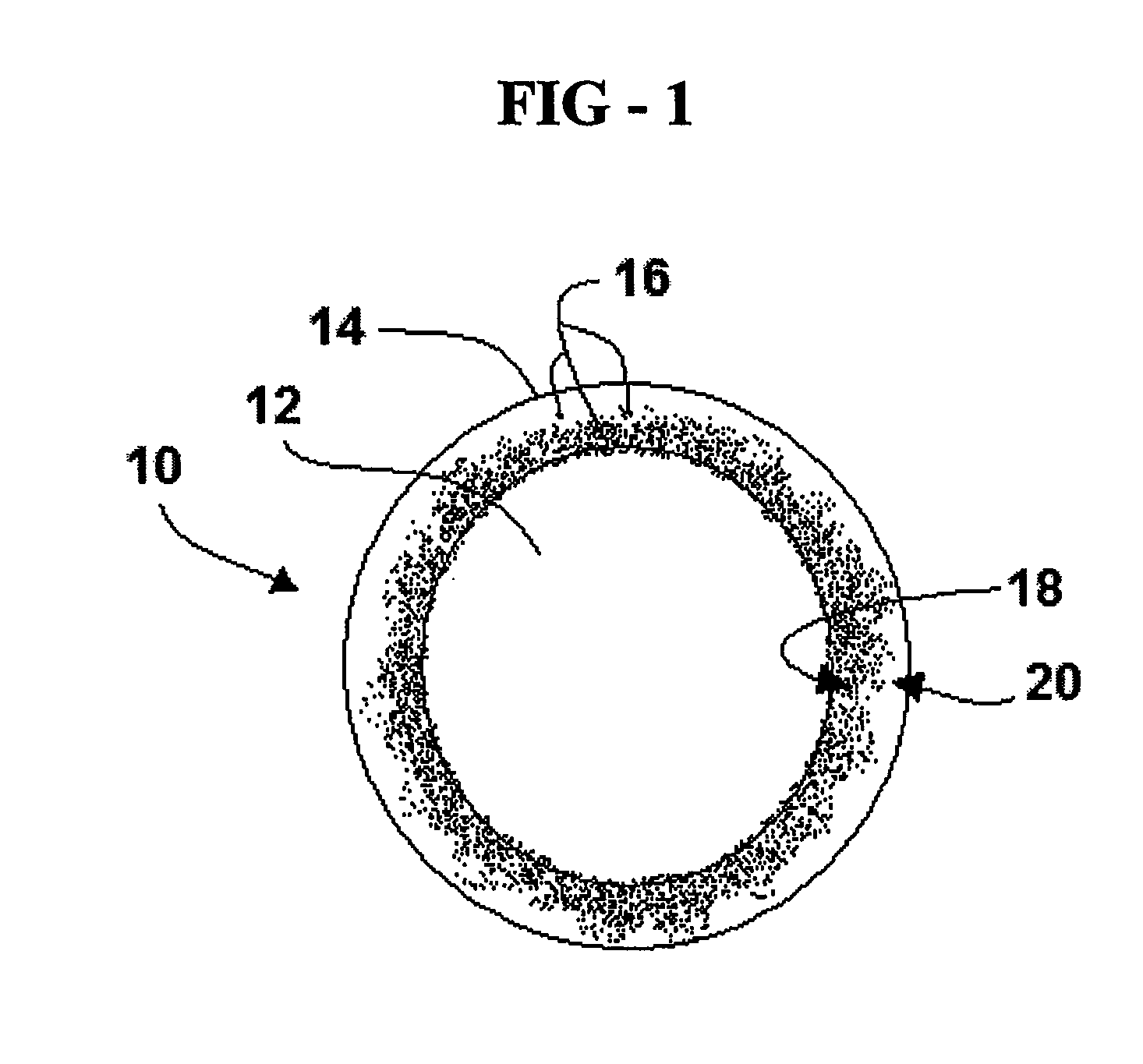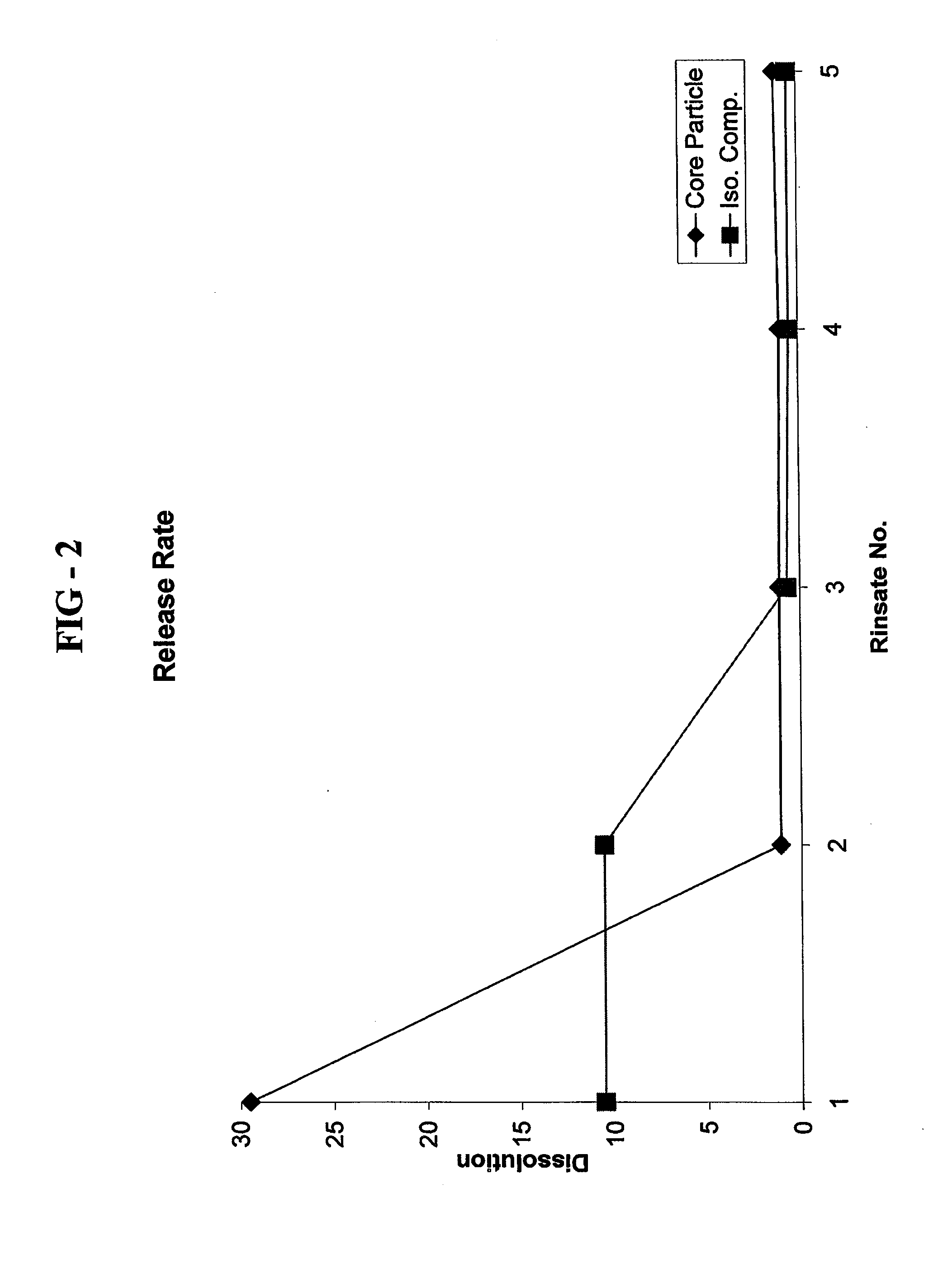Encapsulated particle
a technology of encapsulated particles and encapsulated particles, which is applied in the field of encapsulated particles, can solve the problems of accelerating dissolution rate, degrading of core particles, and limiting the dissolution rate of encapsulated particles, so as to improve swelling resistance, improve moisture resistance, and reduce manufacturing costs
- Summary
- Abstract
- Description
- Claims
- Application Information
AI Technical Summary
Benefits of technology
Problems solved by technology
Method used
Image
Examples
examples
[0072]Encapsulated particles are prepared in beakers. First, an isocyanate-reactive component, specifically a polyol, is heated and added drop-wise to a beaker containing core particles, specifically urea spheres (i.e., fertilizer), to form a polyol-urea mixture. The polyol-urea mixture is swirled gently using a foam mix blade to ensure distribution of the polyol around the urea spheres. Next, an isocyanate component is heated and added to the polyol-urea mixture and manually swirled to ensure complete contact between the urea spheres and the reaction product of the polyol and the isocyanate component. Complete contact results in a polyurethane layer disposed about the urea spheres. The urea spheres coated by the reaction product are subsequently stirred with a foam mix blade to minimize agglomeration resulting in a free flowing group of encapsulated particles, i.e., encapsulated urea spheres.
[0073]Overall, the polyurethane layers are applied at 2 wt % and 4 wt % based on total urea...
PUM
| Property | Measurement | Unit |
|---|---|---|
| thickness | aaaaa | aaaaa |
| diameter | aaaaa | aaaaa |
| thickness | aaaaa | aaaaa |
Abstract
Description
Claims
Application Information
 Login to View More
Login to View More - R&D
- Intellectual Property
- Life Sciences
- Materials
- Tech Scout
- Unparalleled Data Quality
- Higher Quality Content
- 60% Fewer Hallucinations
Browse by: Latest US Patents, China's latest patents, Technical Efficacy Thesaurus, Application Domain, Technology Topic, Popular Technical Reports.
© 2025 PatSnap. All rights reserved.Legal|Privacy policy|Modern Slavery Act Transparency Statement|Sitemap|About US| Contact US: help@patsnap.com



